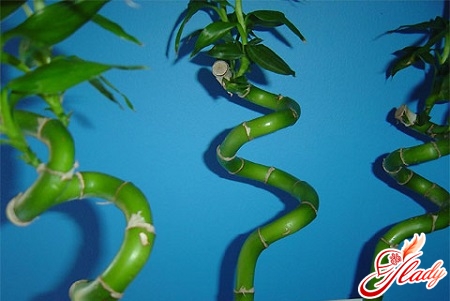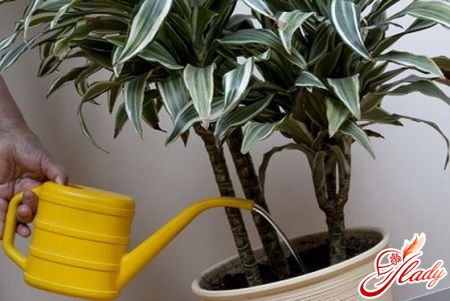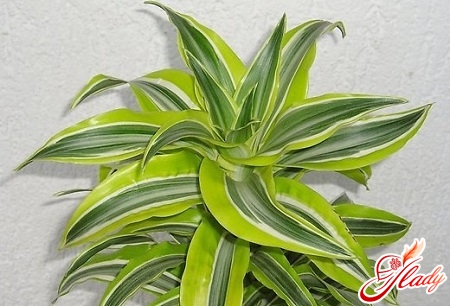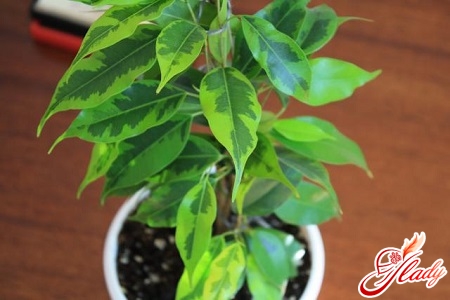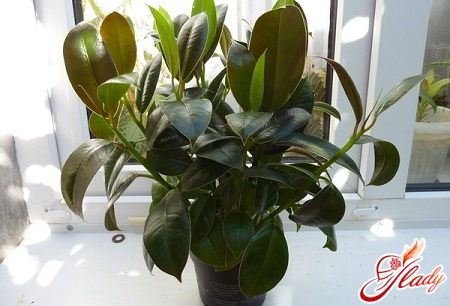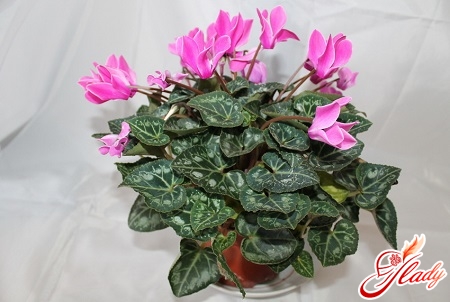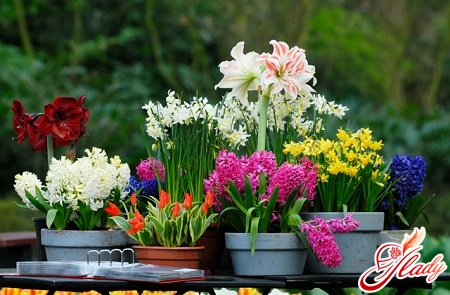 As everyone probably understands, one ofmandatory measures when caring for plants are their regular inspection. Then you will be able to identify diseases of indoor plants or their pests in time. And this is very important, because a diseased plant noticed and removed in time will not have time to infect neighbors. Advanced cases will require chemical methods of control. Many indoor plants are quite unpretentious. But if you do not pay attention to them at all, even the most hardy of them will stop growing. If you follow certain rules, then caring for indoor plants will not require much effort and time from you. But your pets, responding to your care, will delight you with abundant flowering and a thick crown.
As everyone probably understands, one ofmandatory measures when caring for plants are their regular inspection. Then you will be able to identify diseases of indoor plants or their pests in time. And this is very important, because a diseased plant noticed and removed in time will not have time to infect neighbors. Advanced cases will require chemical methods of control. Many indoor plants are quite unpretentious. But if you do not pay attention to them at all, even the most hardy of them will stop growing. If you follow certain rules, then caring for indoor plants will not require much effort and time from you. But your pets, responding to your care, will delight you with abundant flowering and a thick crown.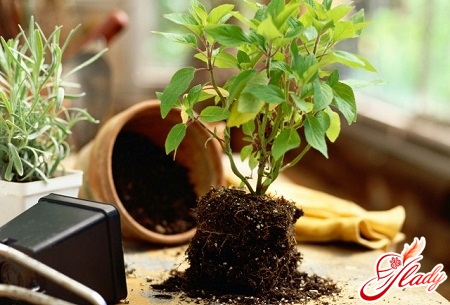
Content costs
Your plants look stunted, they looksick? Are the leaves of your indoor plants covered in spots or turning yellow? Find out what causes indoor plant diseases, causes leaves to wither and dry out, and then eliminate these causes. Yellow leaves Yellowed leaves appear during normal renewal, and if there are few of them, there is no reason to worry. But if there are many yellow leaves, this indicates errors in care - lack of oxygen in the soil, over-moistening, excessively low or high temperatures, poor lighting or a sudden change in lighting.
- Council. You need to find the cause of the yellowing of the leaves and eliminate it. Creating a favorable environment for the plant will help to restore it.
Silvery spots If the spots that appear are clearly visiblelimited, then this is the result of sunburn. Do not confuse these spots with thrips damage to the plant, when a silvery sheen appears on the leaves. Some shade-tolerant plants may develop sunburn when actively exposed to sunlight, and the leaves may turn brown or red.
- Council. Such plants should be removed to a shaded place and protected from direct sunlight.
Curled edges In plants with soft leavesIf the air is too dry or the substrate is too dry, the edges begin to curl. Leaves also curl when the substrate is over-moistened, when the plant is unable to fully absorb moisture.
- Council. It is necessary to moisten the substrate and air in the right degree and in a timely manner, then the leaves will not twist. If, because of the overmoistening, the roots begin to rot, and in this case the smell of decay comes from the pot and the plant, it is urgent to transplant the plant to a new land. Before this, it is necessary to cut off all the rotten roots, and place the cuts better with sprinkled coal.
Light spots It happens that on the leaf bladerandomly placed glassy spots appear. The plant reacts this way to sudden temperature fluctuations, as well as to excessively warm or cold water for irrigation. The same spots appear on the plant if it is sprayed in the sun. Then the water droplets become like magnifying lenses, through which the sun simply burns the tissues of the leaves.
- Council. Learn the basic rules of care and strictly follow them. Do not remove the leaves affected in this way. They are quite viable and continue to supply the plant with nutrients.
Brown edges If you over-fertilize or water irregularly, the leaves will first turn yellow at the edges and then brown. Check the soil to see if a white crust has formed.
- Council. Remove the affected leaves. In order to determine the humidity level of the substrate, there are special humidity indicators that, when checked, change color. If the problem is in the soil, then it is urgent to change the salt supersaturated substrate to another one.
Dry tips This is primarily a sign of dry air. But dry tips can also indicate prolonged drying of the substrate.
- Council. It is necessary to carefully cut off the dried ends with scissors, leaving a thin, dry ledge in the place of the cut. In hotly heated rooms or in hot weather, you should water the plant two or three times a week. It is good in this case to use pots with a double bottom, in which moisture is reserved for future use.
Chlorosis If the leaves have turned pale or yellow, but the veins remain green, this means that the plant is suffering from watering with hard water. This leads to a lack of iron and an excess of calcium.
- Council. Change the water. If this is not possible, boil the water for irrigation, and then stand it. In this case, iron containing fertilizer should also be used. For these purposes, it is possible to dilute iron chelate in water for irrigation - one gram per liter of water, and then defend it within 24 hours.
Cork spots People also call such diseasesindoor plants "turtles". They appear most often on plants with fleshy leaves that store moisture. With constant overdrying and subsequent over-wetting of the substrate or with sharp fluctuations in temperature, cracks begin to appear in the leaf tissues, which then turn into scars.
- Council. Strongly affected leaves are best removed, and in the care it is necessary to eliminate the deficiencies.
Plants can feel just as badand because they are, as they say, "out of their element." The thing is that when you buy new soil for your houseplants in a store, you need to pay attention to what plants it is intended for. For example, soil intended for planting orchids is not suitable for planting palms, ferns will be lost in soil for cacti, and azaleas will not be able to grow in soil for balcony flowers. Do not make your plants suffer from unsuitable soil - they are also alive. In addition to the previous recommendations, I would like to add that you should plan time to care for your green friends, if you love them. To do this, leave a little time each week that you can devote to your green pets. If necessary, water them, feed them, inspect them carefully. If there are wilted parts, remove them, and fight the first signs of diseases of houseplants from the very beginning. In addition to diseases caused by improper maintenance or care of indoor plants, your pets are also at risk of diseases caused by various fungi. Knowing these indoor plant diseases will help you recognize them in time and successfully combat them.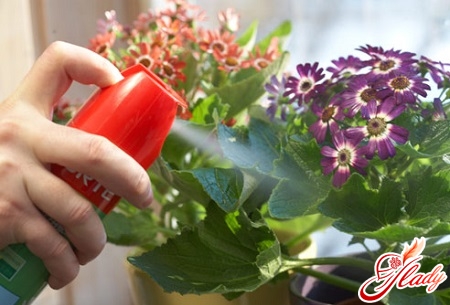
Diseases of plants
Many plant diseases (in addition to improper care) are caused by fungal infections. Let's look at the most common ones.
- Blackleg
A fungal disease that most often affectsseedlings. At ground level, the plant stem turns black, becomes thinner, and the plant falls. To prevent this disease, you need to use disinfected soil, do not drown out the crops, regularly ventilate them and do not allow the soil to become over-moistened. Affected plants are immediately removed, and the rest are treated with a fungicide solution.
- Gray mold (botrytis)
It can develop in cold, damp weather, andalso when there is excess nitrogen in the soil. A shaggy gray mold appears on the leaves and sometimes on the stems. The affected parts of the plant should be removed, and the plant can be treated with a fungicide.
- Powdery mildew, real or false
This is a fungal disease.A white powdery coating (true powdery mildew) or yellow and discolored spots covered with grayish mold underneath (false powdery mildew) appear on the leaves. This disease often affects begonia in cold, damp weather. The enemy of the powdery mildew fungus is the milk bacillus, hence the measures to combat it: dilute any fermented milk product in water - kefir, yogurt, sour milk - and apply to the leaves. Repeat the procedure after a week. You can also dust the leaves with ground sulfur or treat them with a fungicide.
- Black fungus
It looks like a black coating on the leaves.The fungus develops on the sugary secretions of aphids and whiteflies, so it is necessary to fight the root cause. It is better to remove heavily affected leaves, and wash slightly affected ones with soap and water.
- Rust
This disease manifests itself in the form of yellow, orange, brown raised spots. Diseased leaves should be destroyed and the plant treated with a fungicide.
Folk remedies for disease control
Chemical methods of combating plant diseases have now been developed. But if you don't want to deal with pesticides, you can try folk remedies.
- Infusion of nettle
It is used against aphids.Five hundred grams of fresh nettle, collected before flowering, are poured with five liters of water and infused for twelve hours to a day. The treatment is carried out by spraying the plant with undiluted infusion.
- Broth horsetail
It is sprayed on the leaves and watered on plants.against powdery mildew. Five hundred grams of fresh or one hundred and fifty grams of dried horsetail grass are infused in five liters of water and boiled for thirty minutes. After this, the decoction is cooled, filtered and diluted with water in a ratio of one to five.
- Broth from wormwood
Used for spraying against aphids. One tablespoon of wormwood is boiled in one liter of water for an hour. Then the solution is filtered and used without dilution.
- Infusion of onion
Used against aphids.A liter jar of onion peel is filled to the top with water and infused for 24 hours. Then the peel is squeezed out, the infusion is filtered and the plants are sprayed with it two or three times, repeating the procedure after five days.
- Infusion of garlic
Used against aphids, thrips, fungal infections. Twenty to thirty small cloves of garlic are crushed and squeezed. The resulting juice is dissolved in ten liters of water and used for spraying.
- A solution of wood ash
It is used against aphids and thrips. Pour twelve tablespoons of ash with a liter of water and leave for two days. Then drain the solution and spray it on the plants.
- Infusion yarrow
Used against aphids, mites, thrips.Scald fifteen tablespoons of dry crushed grass with boiling water, pour a liter of hot water and leave for two days. Strain the infusion and spray the plant.
- Mustard infusion
Used against aphids and thrips.To prepare the concentrate, three teaspoons of mustard powder are infused in one liter of water in a tightly sealed container for two days, then filtered. Before spraying, four parts of water are added to one part of the concentrate.
- Decoction and infusion of tobacco
Used against aphids, thrips and mites.For eight tablespoons of tobacco, take one liter of water. To prepare the infusion, tobacco is kept in water for two days, and then filtered. To prepare the decoction, tobacco is infused for one day, then boiled for two hours and filtered. Before spraying, the decoction and infusion are diluted by half with water. And finally, remember the golden rule. The main preventive measure against plant diseases is proper agricultural technology. A properly transplanted, timely watered and fed plant has enough strength to resist pests and diseases on its own. We recommend reading:




